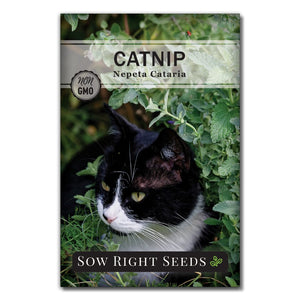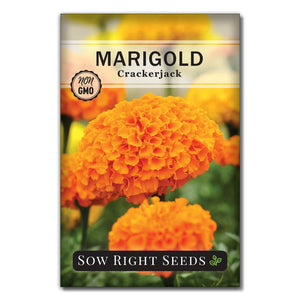How to Keep Rabbits Out: Essential Tips to Safeguard Your Garden
PestsYou’ve worked hard, and finally, beautiful flowers and green vegetables are filling your garden. You can already imagine the taste of those salads and the gorgeous bouquets you'll pick. Unfortunately, rabbits see your garden as an all-you-can-eat buffet! One day, your lettuce is lush and green; the next, it’s chewed to the ground. From tender seedlings to blooming flowers, nothing is off-limits. While rabbits can be persistent, there are proven ways to keep them out and protect your plants.

Rabbits can be adorable with their fluffy tails and long ears; I've been tricked by them before. But those innocent-looking creatures can be a menace, chewing up your garden and landscape and destroying all of your hard work.
How Can I Keep Rabbits Out of My Garden?
You don’t have to be a detective to figure out if rabbits are the pests eating up your garden. Look for telltale round, pea-sized droppings as your first clue. The evidence of their nibbles is distinctive, too: clean bites at 45-degree angles. (Jagged, torn edges are more likely evidence of deer.)

Why are Rabbits in Your Yard?
Rabbits love eating new shoots and leaves, and they’re particularly drawn to woody plants, annual flowers, vegetables, raspberries, blackberries, and apple trees. (They tend to ignore tomatoes, peppers, potatoes, squash, and corn.)
Essential Tips for Deterring Rabbits
To keep rabbits from treating your garden as their personal snack bar, there are a few options to try, as well as possible drawbacks.
Physical Barriers: The Most Reliable Rabbit Defense
A sturdy fence is the best way to keep rabbits out of your garden for good. However, not all fences are rabbit-proof! I've learned the hard way that these small but determined critters can squeeze through surprisingly tiny gaps and dig underneath obstacles. They'll even chew through plastic barriers.
For the best protection, choose chicken wire or hardware cloth with holes no larger than 1 inch. The fence should be at least 2–3 feet tall and extend 6 inches underground to prevent rabbits from burrowing under.
Additional Tips for a Rabbit-Proof Fence:
- Avoid planting tempting crops along the fence line—rabbits will reach through if they can.
- Use flashing or metal edging under gates to block gaps where rabbits might sneak in. And always shut the gate behind you!
- Secure fencing to sturdy posts every few feet to prevent sagging or weak spots.
- Check regularly for holes, chew marks, or signs of burrowing.
If a full garden fence isn’t an option, raised beds, row covers, or individual plant cages made from chicken wire can help protect vulnerable plants. To prevent rabbit damage, you can also wrap shrubs or young trees in mesh wire.
With the right fencing and barriers in place, you can stop rabbits from treating your garden like their personal buffet.

Create a Rabbit-Unfriendly Garden Environment
There are things you can do to make your yard and garden less inviting to rabbits. Rabbits prefer to stay hidden, so remove anything that might provide cover for rabbits to hide.
Trim lower branches of shrubs and bushes. Control weeds, keep the grass mowed, and clean up brush piles, tall grass, and dense vegetation around your garden to discourage them from sticking around.
You can also use motion-activated sprinklers or even scatter human hair or pet fur around your plants. Rabbits tend to avoid areas where predators might be lurking.
Natural Rabbit Deterrents & Repellents
Some gardeners turn to chemical rabbit repellents, but they come with drawbacks—many are toxic to humans, can make your vegetables taste awful, and need constant reapplication to stay effective. That’s why we recommend sticking with natural solutions that are safer for both you and your plants.
Scent-Based Repellents:
Rabbits have a strong sense of smell, and certain scents can send them hopping in the other direction. Sprinkling blood meal, bone meal, or dried sulfur around your plants can help deter them. Not only do these work as natural fertilizers, but rabbits dislike the scent.
Garlic, onions, and hot peppers also make excellent deterrents—blend them with water to create a spray or plant them around your garden as a protective barrier.
Homemade Rabbit Repellent Spray: Mix water, crushed garlic, a dash of cayenne pepper, and a few drops of dish soap in a spray bottle. Spritz it on leaves and around the garden to make your plants unappetizing. Just be sure to reapply after heavy rain.
By using these natural methods, you can keep rabbits out of your garden without resorting to harsh chemicals.

Using Pets to Deter Rabbits
If you have a dog or an outdoor cat, they might naturally help keep rabbits away. The presence of a predator—whether real or just the scent—can be enough to make rabbits think twice before venturing into your garden. However, this method comes with its own challenges. Pets can unintentionally damage your plants by digging or trampling through garden beds, and outdoor cats can pose a threat to local bird populations. If using pets as a deterrent, consider designated garden pathways or fencing to keep both your plants and wildlife safe.
I've seen one problem with this: if the rabbits are hungry enough, they'll figure out when to visit the garden while the pets are sleeping.
Grow Plants Rabbits Tend to Avoid
Rabbits are picky eaters when it comes to strong-smelling, bitter, or tough-textured plants. If you're looking to naturally discourage them, consider adding some of these to your garden:
- Herbs: Lavender, rosemary, sage, thyme, oregano
- Flowers: Marigolds, snapdragons, daffodils, foxglove, allium
- Vegetables: Onions, leeks, garlic, rhubarb
- Other Plants: Yarrow, lamb’s ear, ferns, ornamental grasses
Planting these around the perimeter of your garden or interspersing them with rabbit-favorite crops can help reduce damage naturally.

Using Traps as a Last Resort
If you’ve tried other methods and still find rabbits munching on your plants, you might consider using a trap. There are rabbit traps available for purchase that allow you to catch and release the critters elsewhere. However, be aware that rabbits have a territory of about 10 acres, so when deciding where to relocate them, make sure it’s far enough from your garden to avoid a return visit.
Keep in mind that rabbits are wild animals and can carry diseases. For safety, it might be best to leave this job to professionals, especially if you’re unsure how to handle them. Always check local regulations about trapping and releasing wildlife in your area, as laws can vary.
Keep Rabbits Out of Your Garden for Good
Rabbits may be clever, but you're smarter when it comes to keeping them out of your garden! Just like the mischievous Peter Rabbit, they can be persistent, but with the right combination of rabbit-proofing techniques, you can protect your plants from becoming their next meal. Whether you use physical barriers, natural deterrents for rabbits, or even traps as a last resort, a little persistence and planning will go a long way. It may take some work, but with these strategies, you’ll be able to keep rabbits out of your garden and enjoy a thriving harvest free from nibbling pests.
Written by Teresa Chandler
Resources:
Protecting Gardens from Rabbits - Iowa State University Extension
How to protect your yard and garden from deer and rabbits - MSU Extension
Preventing Rabbit Damage - Arizona Cooperative Extension
Preventing and Controlling Damage Caused by Cottontail Rabbits - University of Missouri Extension








Leave a comment